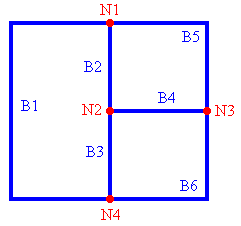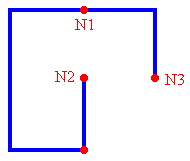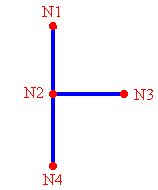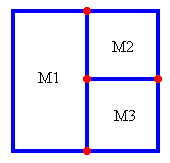The number of loop currents required to describe any electric network may be determined by removing successive branches from the network until no closed paths remain anywhere in the network, but without disconnecting any of the nodes (this is called converting the network into a tree). The number of loop currents required equals the number of branches that had to be removed. This is a unique number, independent of which branches were removed.

Example:
In the diagram to the right we show a network from which we have removed all the resistors and voltage sources so that we can focus attention on the topology of the network.
How many loop currents are required to describe the network?


